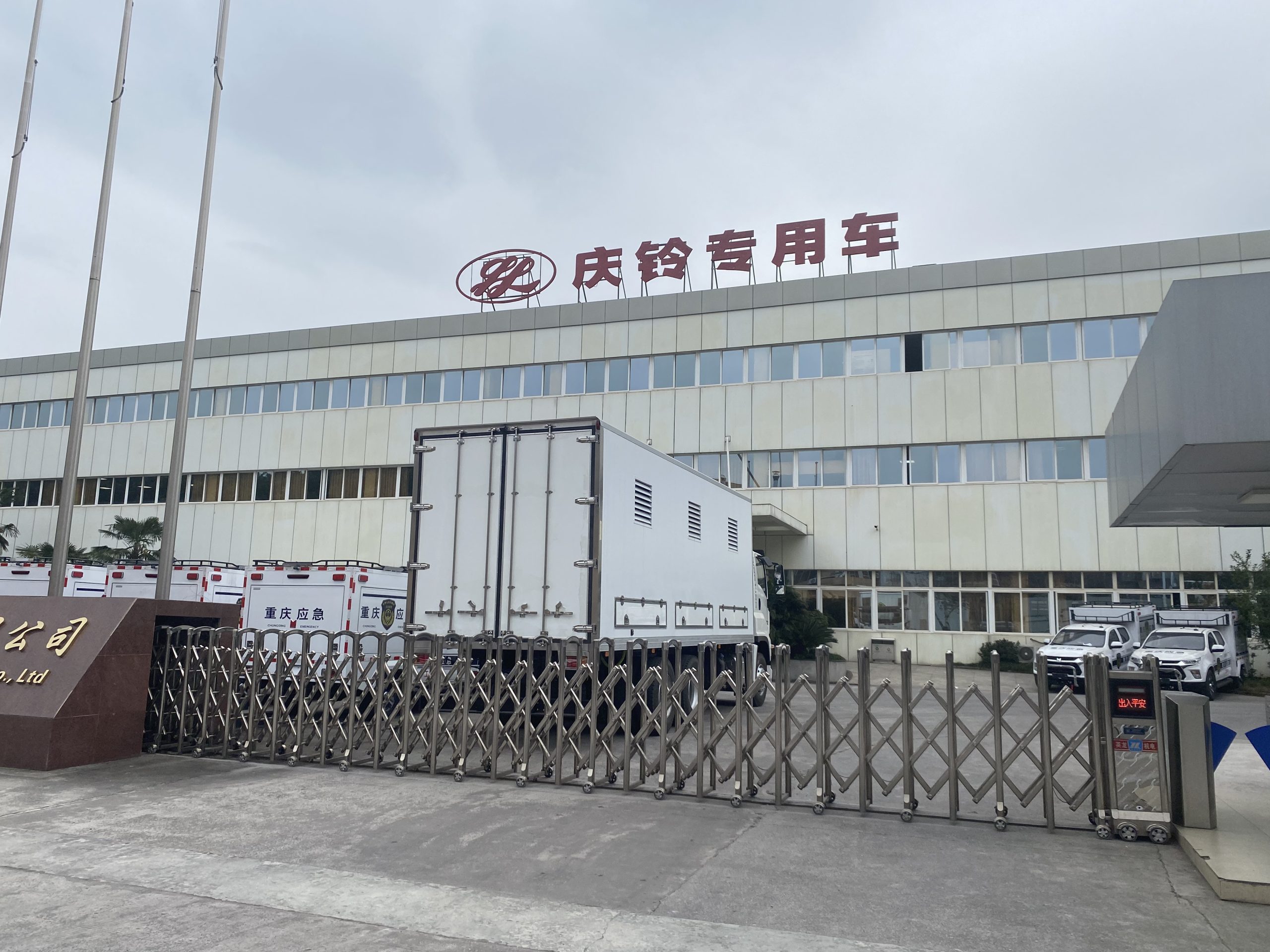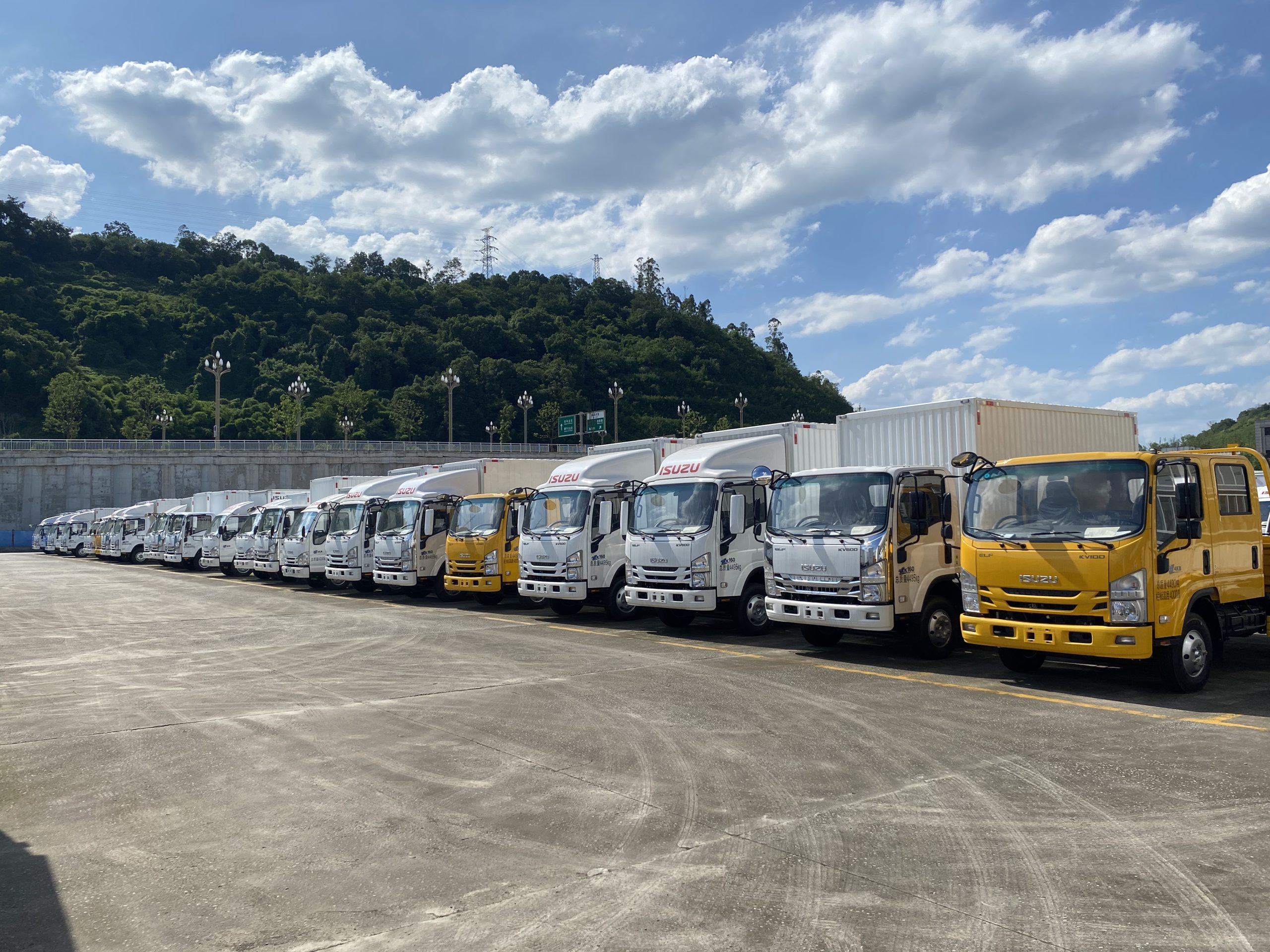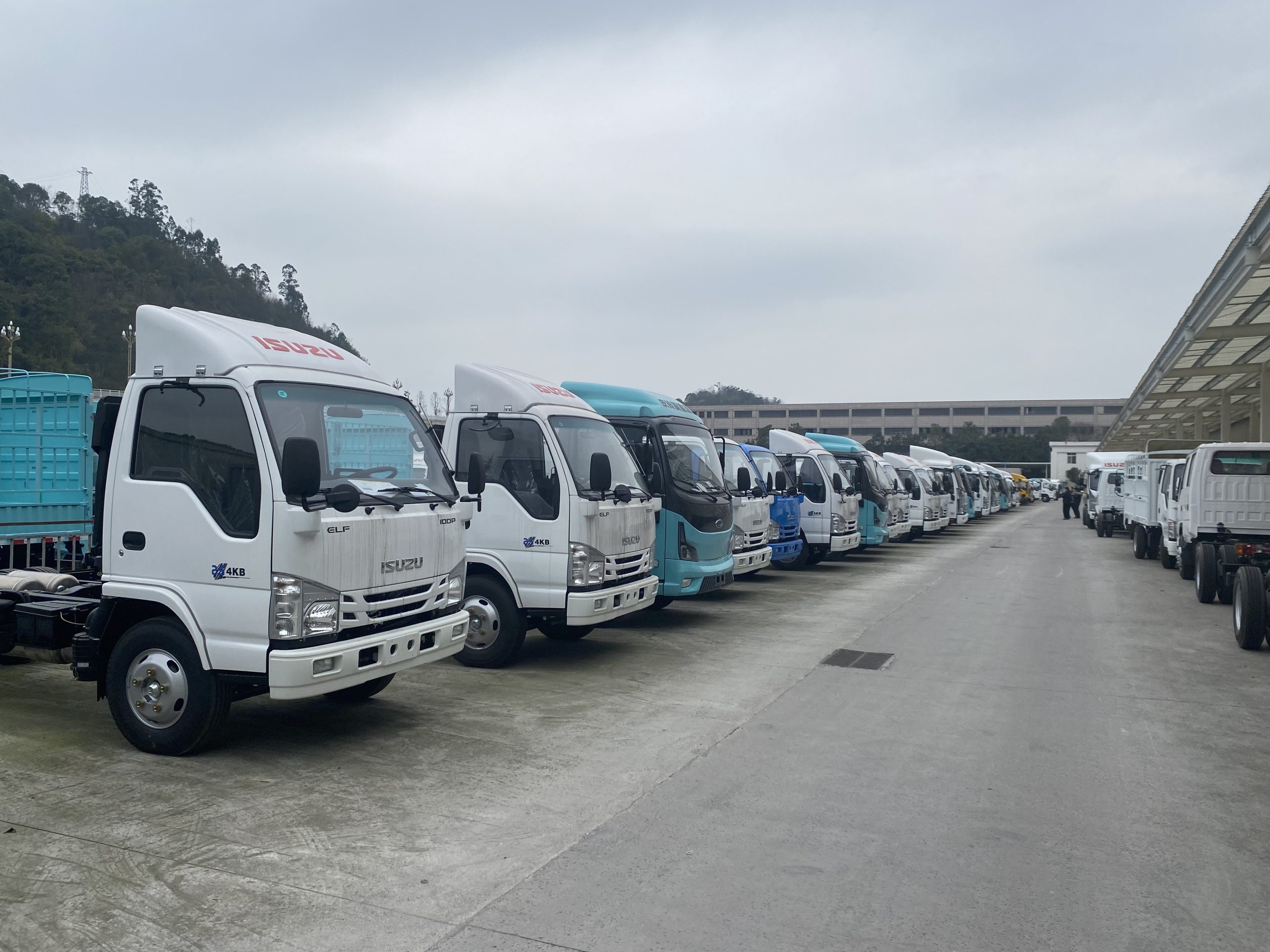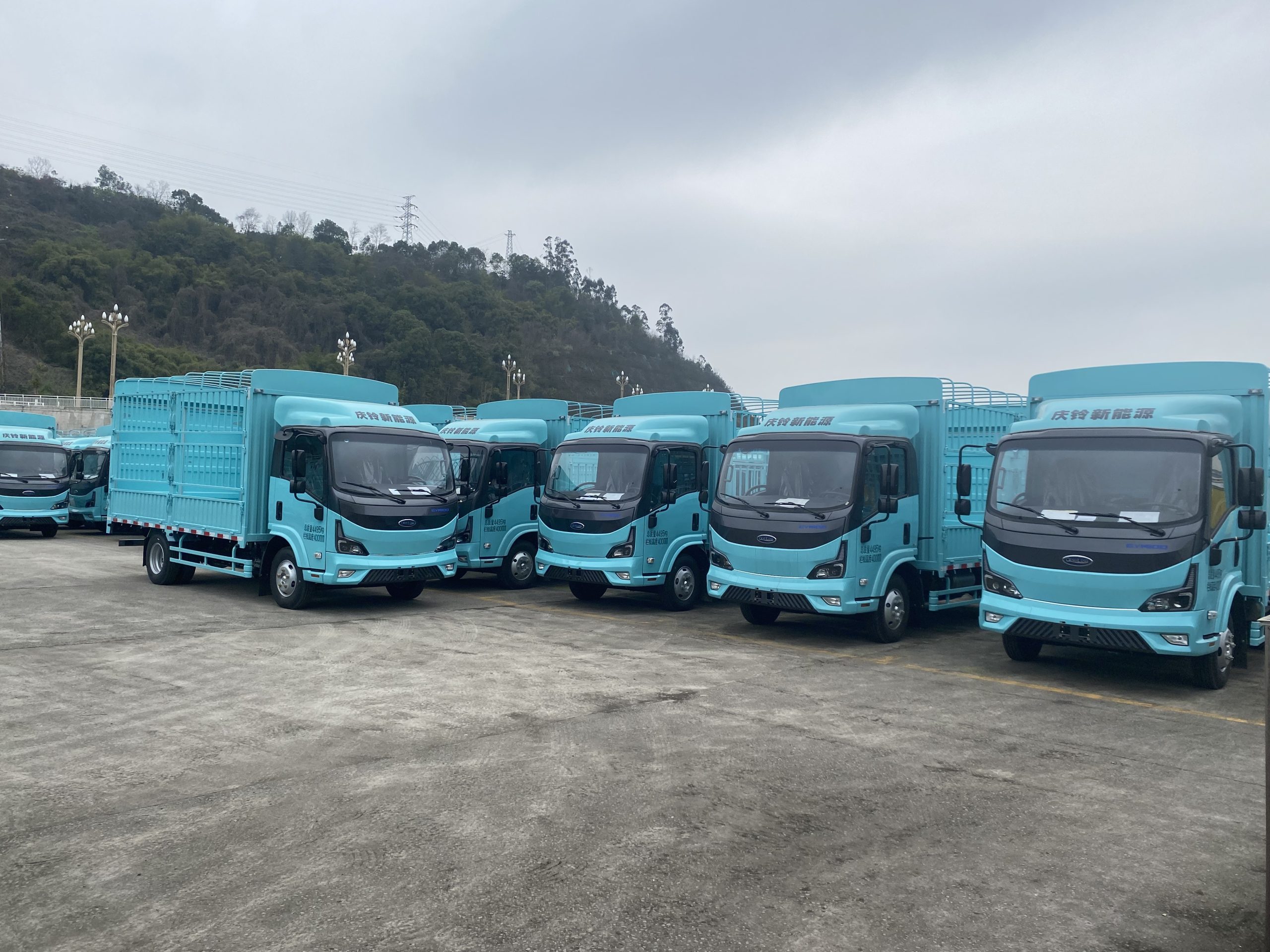Steel Arteries: The 30-Year Symbiosis of Qingling Isuzu Trucks and China's Logistics
Across the vast expanse of China, over 30 million freight vehicles traverse the nation’s sprawling highway network every day, forming the logistical lifelines of the world’s second-largest economy. Amid this relentless flow of steel, a distinctive blue silhouette has remained a constant presence for more than three decades—the Qingling Isuzu truck. A paragon of Sino-Japanese technological collaboration, it has not only witnessed the dramatic evolution of China’s logistics industry but has also helped shape the very foundations of modern freight transport with its unique “iron horse” philosophy. From coastal factories to western construction sites, from urban distribution hubs to cross-border shipping routes, the roar of Qingling Isuzu engines echoes like the steady heartbeat of China’s industrialization.
In 1985, the seventh year of China’s reform and opening-up, the Chongqing Automobile Manufacturing Plant joined hands with Japan’s Isuzu Motors, giving birth to Qingling Motors, one of the first Sino-foreign joint ventures in China’s automotive industry. At the time, this partnership was remarkably forward-looking—China had fewer than a million kilometers of roads, zero highways, and a severe shortage of specialized freight vehicles. Isuzu brought advanced diesel engine technology and vehicle design, while Qingling contributed deep insights into the domestic market. This fusion of “technological DNA” and “market soil” produced the first generation of localized Isuzu N-series light trucks, whose durability quickly earned acclaim at construction sites in the south and long-haul routes in the north.
During the infrastructure boom of the 1990s, Qingling Isuzu demonstrated extraordinary adaptability. Along the treacherous cliffside roads of Yunnan’s Nujiang Gorge, light trucks equipped with 4JB1 engines climbed steep 30% grades with unwavering stability. On the fringes of the Taklamakan Desert, specially modified refrigerated trucks ensured the delivery of fresh agricultural produce. In the bitter cold of northeastern China, models fitted with preheaters started reliably at -30°C. This “survival of the fittest” product philosophy allowed Qingling Isuzu to carve out its niche across diverse terrains, climates, and road conditions. By the time China joined the WTO in 2001, Qingling had sold over 200,000 commercial vehicles, becoming an unspoken champion of its segment.
The first decade of the 21st century saw explosive growth in China’s logistics sector. After the 2008 global financial crisis, the country’s 4 trillion yuan stimulus package unleashed massive infrastructure and logistics demands. By then, Qingling Isuzu had evolved from merely importing technology to co-developing vehicles tailored to local needs. Engineers enhanced suspension systems and cargo structures to meet Chinese drivers’ demands for greater load capacity and speed. In response to rising fuel prices, they introduced more efficient turbocharged intercooler technology. Following the trend toward digitization, CAN bus control systems were integrated. These localized innovations were not mere compromises but intelligent evolutions that preserved Isuzu’s core quality. The 2013 launch of the new-generation GIGA heavy-duty truck, with its spacious cab and sleeper berths designed for long-haul drivers, won the hearts of independent truckers with its human-centric approach.
Amid the wave of the new energy revolution, Qingling Isuzu demonstrated the transformation wisdom of traditional manufacturers. Unlike the radical strategies of EV startups, Qingling adopted a dual-track approach: optimizing conventional powertrains while exploring new energy alternatives. While continuing to refine diesel engine technology—achieving a best-in-class thermal efficiency of 46%—it also partnered with companies like Bosch to develop pure electric and hydrogen fuel cell models. The 2021 EV100 electric light truck, designed for urban “last-mile” logistics, offers a 200-kilometer range and one-hour fast charging, already deployed in fleets for companies like SF Express and JD.com. This balanced strategy—preserving traditional strengths while embracing change—reflects a perfect fusion of Japanese “kaizen” philosophy and China’s rapid market evolution.
Today, over 600,000 Qingling Isuzu commercial vehicles traverse China’s roads. Behind this number lie countless stories: during the Sichuan earthquake disaster, Qingling pickups navigated landslide-stricken routes to deliver supplies; in Xinjiang’s cotton harvest season, modified wide-body trucks haul snow-white bales day and night; in the ports of the Greater Bay Area, electric light trucks glide silently among shipping containers. Each vehicle is a mobile economic cell, carrying the dreams of individual drivers while connecting the supply and demand ends of industrial chains.
Looking back from the vantage point of the 14th Five-Year Plan, the secret to Qingling Isuzu’s success may lie in this: it never saw itself merely as a manufacturer of vehicles but as an enabler of logistical value. From selling trucks to providing full-lifecycle services, from offering products to delivering transport solutions, this evolution mirrors the broader transformation of Chinese manufacturing. As the latest generation of intelligent, connected trucks integrates cargo-matching systems and fuel-optimizing algorithms, Qingling Isuzu has transformed cold steel machinery into productivity tools with a human touch.
Thirty-eight years of perseverance have etched Qingling Isuzu’s tire tracks deep into the path of China’s economic development. These steel steeds are more than just vehicles—they are witnesses and participants in an era of monumental change. With their rugged frames, they have carried the collective memory of an agricultural nation leaping toward industrial prowess. Through continuous innovation, they have demonstrated how “Made in China” can achieve excellence through openness and cooperation. As autonomous driving and smart logistics redefine the future, Qingling Isuzu will face even greater challenges. Yet, if it holds fast to its ingrained adaptability and technological inclusiveness, this blue streak will continue to leave an indelible mark on the canvas of China’s logistics landscape
👉 Learn more or inquire about partnerships: www.xinghezhong.com



